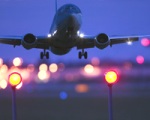
NTSB to FAA: Addressing Human Fatigue Long Overdue
The National Transportation Safety Board recently made two recommendations to the Federal Aviation Administration to address human fatigue within airline operations. NTSB recommended that FAA develop guidance, based on empirical and scientific evidence, for operators to establish fatigue management systems, including information about the content and implementation of these systems.
The board also made a recommendation to develop and use methodology that will continually assess the effectiveness of fatigue management systems implemented by operators, including their ability to improve sleep and alertness, mitigate performance errors, and prevent incidents and accidents.
"The safety board is extremely concerned about the risk and the unnecessary danger that is caused by fatigue in aviation," said NTSB Chairman Mark V. Rosenker. "We have seen too many accidents and incidents where human fatigue is a cause or contributing factor."
NTSB's recommendations letter cites three accidents and an incident highlighting the danger of human fatigue within airline operations:
- On Oct. 19, 2004, Kirksville, Mo., Corporate Airlines flight 5966 struck several trees on its final approach and crashed short of the airport. Both pilots and 11 passengers were killed. Two passengers received serious injuries.
- On Feb. 18, 2007, Delta Connection flight 6488, operated by Shuttle America Inc., overran the end of the runway as it was landing at Cleveland-Hopkins International Airport. All 72 passengers and a crew of four deplaned without serious injury.
- On April 12, 2007, Pinnacle Airlines flight 4712 ran off the runway after landing at Cherry Capital Airport, Traverse City, Mich. None of the 49 passengers or crew of three were injured.
- On Feb. 13, 2008, Go! flight 1002, operated by Mesa Airlines, flew past its destination airport, General Lyman Field, Hilo, Hawaii. Air traffic control repeatedly attempted to contact the crew for more than 18 minutes, as it flew over Maui, crossed the big island of Hawaii and headed southeast over the Pacific Ocean. The airplane traveled 26 nautical miles beyond its intended destination airport before the flight crew responded. There were no injuries.
"It is imperative that the FAA take action to reduce human fatigue in airline operations," Rosenker said. "Addressing this safety related measure is long overdue. We must and can correct this serious concern."
NTSB's recommendation letter, including the recommendations, will be available online at www.ntsb.gov, under "Board Meetings."